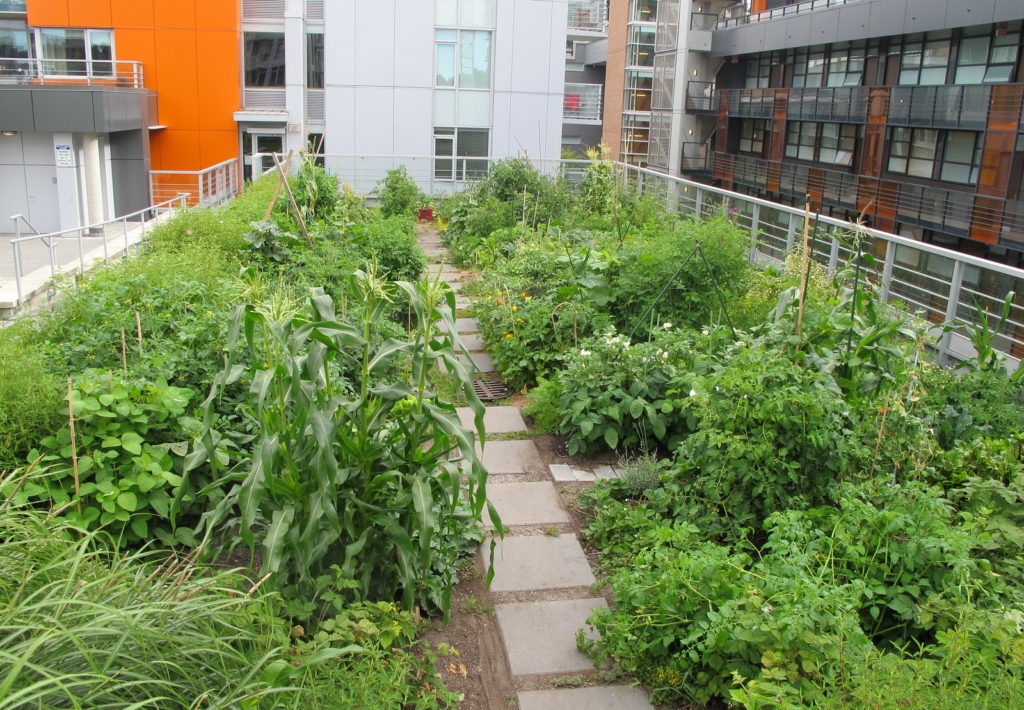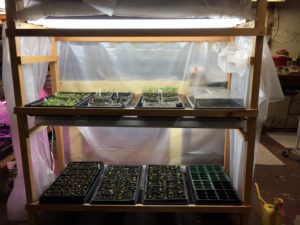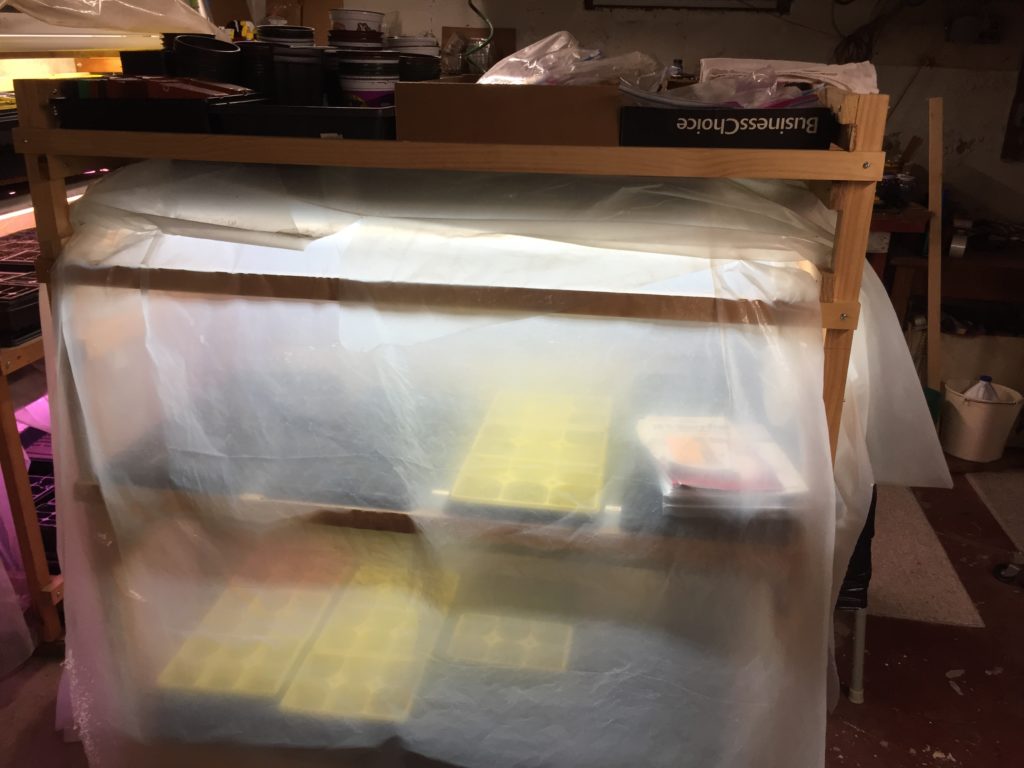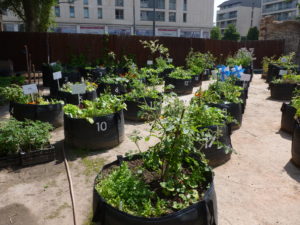Gardening in the city is a fantastic way to bring a little bit of nature into the city and to grow your own fresh fruits and vegetables, even if you don’t have a lot of space. With the right planning and preparation, you can create a beautiful and productive urban garden in even the smallest of spaces. Whether you have a balcony, a patio, or just a windowsill, you can turn your urban space into a vibrant and thriving garden. In this blog, we’ll share tips and tricks for starting and maintaining an urban garden, from selecting the right plants to dealing with common challenges. So, whether you’re a seasoned gardener or just starting out, join us as we explore the world of urban gardening.
Starting an Urban Garden

If you’re looking to start an urban garden, there are many things you must consider.
Assess your space: Determine how much space you have available for gardening and how much sunlight it receives. This will help you select plants that are well-suited for your space.
Choose the right plants: Select plants that are well-suited for urban gardening, such as succulents, herbs, and small shrubs. Keep in mind the amount of sunlight and the type of soil in your space when choosing plants.
Create a plan: Decide where you want to place your plants and how you want to arrange them. Consider using raised beds, containers or vertical gardening if you have limited space. Hortisketch is the perfect way to plan a garden.
Prepare the soil: Make sure the soil is well-draining and rich in nutrients. You may need to amend the soil with compost or fertilizer to provide the right growing conditions for your plants.
Get the right tools: Invest in basic gardening tools such as a trowel, pruner, and gloves.
Start small: If you’re new to gardening, it’s best to start with a small number of plants and gradually add more as you gain experience.
There are many ways to start gardening in the city. Here are the best ways to start.
Windowsill Garden

The simplest way to start gardening in the city is by creating a windowsill garden. It can be a fun and rewarding project that allows you to grow your own fresh herbs, vegetables, and even small flowers indoors, even if you have a small apartment. Here’s how to get started:
Choose the right plants: Select plants that are well-suited for windowsill gardening. Herbs such as basil, thyme, and parsley are popular choices, as well as succulents, and small flowers such as pansies or violas.
Assess the light: Make sure your windowsill receives enough sunlight. Most herbs and vegetables need at least 6 hours of sunlight a day. If your windowsill doesn’t receive enough sunlight you should consider indoor container planting instead. Or, if you’re really creative, you can create indoor growing racks which can also be used to extend your growing season.
Choose the right containers: Use small pots or containers with drainage holes to prevent water from accumulating and causing damage to your windowsill. A lack of drainage can lead to root rot.
Prepare the soil: Make sure the soil is well-draining and rich in nutrients. You may need to amend the soil with compost or fertilizer to provide the right growing conditions for your plants.
Plant your seeds or seedlings: Plant the seeds or seedlings according to the instructions on the package. Be sure to space them out according to the needs of the specific plants.
Water and fertilize: Keep the soil moist but not waterlogged. You can use a watering can or a small watering bottle for your windowsill plants.
Monitor for pests: Keep an eye out for pests such as aphids, spider mites, or whiteflies. You can use insecticidal soap or neem oil to deal with them.
Maintenance: Regularly prune your plants to encourage bushier growth.
Starting a windowsill garden can be a fun and easy way to get started with gardening. With a little bit of effort and care, you’ll be able to enjoy fresh, homegrown herbs, vegetables, and flowers all year round.
Rooftop or Balcony Gardening

Starting a rooftop garden can be a fun and rewarding project, but it does require some planning and preparation. Here are some important things to consider when starting a rooftop garden:
Check the structural capacity of your roof: Make sure that your roof can support the weight of soil, plants, and water.
Conduct a thorough assessment of the site: Determine the amount of sunlight, wind, and water that your rooftop receives. This will help you select plants that are well-suited for the conditions. If your rooftop or balcony receives poor sunlight due to another building creating too much shade, you may need to pick plants with minimal solar requirements.

Choose appropriate plants: Select plants that are well-suited for rooftop gardens, such as succulents, herbs, and small shrubs. Consider the weight of the soil and plants, as well as the structural capacity of the roof when deciding on plants. Similar to as above, consider the sunlight requires as well.
Use raised beds or containers: To help with drainage and to keep the weight on the roof to a minimum, use raised beds or containers to plant in.
Maintenance: Rooftop gardens require regular maintenance, such as pruning, fertilizing, and pest control.
It is also important to note that it’s always a good idea to check with your landlord or building management to ensure that you have the proper permission before starting your rooftop or balcony garden.
Alternate Urban Gardening Ideas
If you do not have a root top, balcony, or windows that open for a windowsill garden, there are several ways to garden in the city even if you have a small apartment. Try some of these simple gardening methods.
 Container gardening: This is a great option for people with small spaces. You can use containers to grow herbs, vegetables, and even small flowers. Placement of your containers is critical as they will need to be in range of sunlight.
Container gardening: This is a great option for people with small spaces. You can use containers to grow herbs, vegetables, and even small flowers. Placement of your containers is critical as they will need to be in range of sunlight.
Indoor gardening: You can grow a variety of plants indoors, such as herbs, succulents, and small flowers. Indoor gardening can be done with the use of grow lights, which simulate sunlight and can be used to grow plants indoors.
Vertical gardening: This is a great option for people with limited space. You can use wall-mounted planters or hanging baskets to grow plants vertically. Some companies even sell vertical planter kits that include irrigation.
Community gardening: Many cities have community gardens where residents can rent a small plot of land to grow their own plants. This is a great way to garden in the city if you don’t have your own outdoor space. Joining a gardening community is also a great way to meet people and talk gardening. Online gardening communities are also a great way to ask questions, share photos, and join groups.
It is important to keep in mind that in all cases, when you are gardening in a small space, it is important to choose plants that will thrive in those conditions, and to keep the size of the plants in mind when choosing them.

Best Plants for Urban Gardening

The best types of plants that grow in the city will depend on the specific conditions of the rooftop, balcony, or apartment, such as the amount of sunlight, the drainage, and the type of soil. Some plants that are well-suited for rooftop gardens include succulents, herbs, and small shrubs. Vegetables and fruits such as tomatoes, peppers, strawberries, and herbs can also be grown in rooftop or balcony gardens.
There are also many types of flowers that grow well in urban settings.
Succulents: Technically, these are not flowers, they are cacti, but are easy to care for like flowers. These plants are hardy and require minimal care. They come in a variety of colors and shapes and can be planted in containers or raised beds.
Annuals: Flowers such as marigolds, zinnias, and sunflowers are easy to grow and can provide a lot of color.
Perennials: Flowers such as sedum, asters, and black-eyed susans are hardy and can come back year after year.
Sedums: These are a hardy succulent that come in a range of colors and sizes and can be planted in a container or in the ground.
Asters: They are a hardy perennial flower that bloom late in the summer and fall and come in a variety of colors.
Black-eyed susans: These are a hardy perennial flower that bloom in the summer and come in a yellow or orange color.
Urban gardening is a fantastic way to bring a little bit of nature into the city and to grow your own flowers and vegetables, even if you don’t have a lot of space. With the right garden planning and preparation, you can create a beautiful and productive urban garden in even the smallest of spaces. Whether you have a balcony, a patio, or just a windowsill, you can turn your urban space into a vibrant and thriving garden.
Throughout this blog, we’ve shared tips and tricks for starting and maintaining an urban garden, from selecting the right plants to dealing with common challenges. We’ve also shared inspiring stories of urban gardeners who have turned their small spaces into thriving oases. Whether you’re a seasoned gardener or just starting out, urban gardening is an accessible and rewarding hobby that can bring joy and satisfaction to your life.
So, don’t be discouraged by the lack of space. With a little bit of creativity and effort, you can create your own urban garden and enjoy the benefits of growing your own flowers, vegetables, and herbs. Remember to take it step by step and not to be afraid of making mistakes, as that is how we learn and grow as gardeners.

Contact Author
 info@gardensavvy.com
info@gardensavvy.com Recent Posts
- Smart Gardening: How Technology Is Revolutionizing Horticulture
- Understanding Gardening Zones: What You Need to Know
- The Right Tools For Your Gardening And Landscaping Needs
- Maximizing Your Harvest: Square Foot Gardening Chart for Beginners
- Holiday Garden Scents: Plants for Natural Aromatherapy in Your Home









